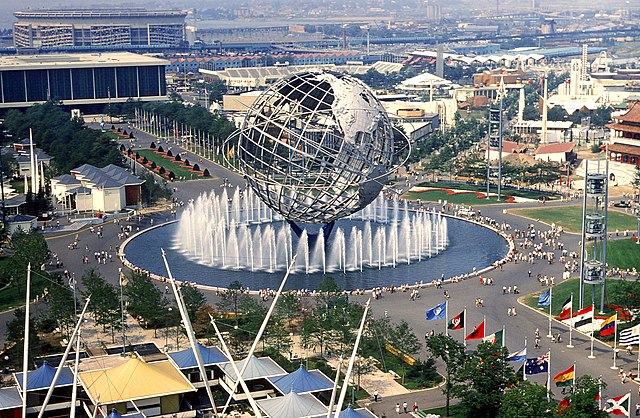1964 New York World's Fair
The 1964–1965 New York World's Fair was a world's fair that held over 140 pavilions and 110 restaurants representing 80 nations, 24 U.S. states, and over 45 corporations with the goal and the final result of building exhibits or attractions at Flushing Meadows–Corona Park in Queens, New York City. The immense fair covered 646 acres (2.61 km2) on half the park, with numerous pools or fountains, and an amusement park with rides near the lake. However, the fair did not receive official support or approval from the Bureau of International Expositions (BIE).
Unisphere viewed from observation towers of the New York State Pavilion
View of the Unisphere with world flags
Loaned from the Vatican, the sculpture by Michelangelo titled Pietà was among the most popular exhibits at the fair
West Berlin Pavilion, by Hans Wehrhahn
A world's fair, also known as a universal exhibition or an expo, is a large global exhibition designed to showcase the achievements of nations. These exhibitions vary in character and are held in different parts of the world at a specific site for a period of time, typically between three and six months.
Poster advertising the Brussels International Exposition in 1897
Replica of the Gokstad Viking ship at the 1893 Chicago World's Fair
International Exhibition of Modern Decorative and Industrial Arts in Paris, France in 1925. Autochrome Lumière showing Polish pavilion.
Palace of the railways and great connections at the International Exhibition of Hydropower and Tourism in Grenoble, France in 1925








